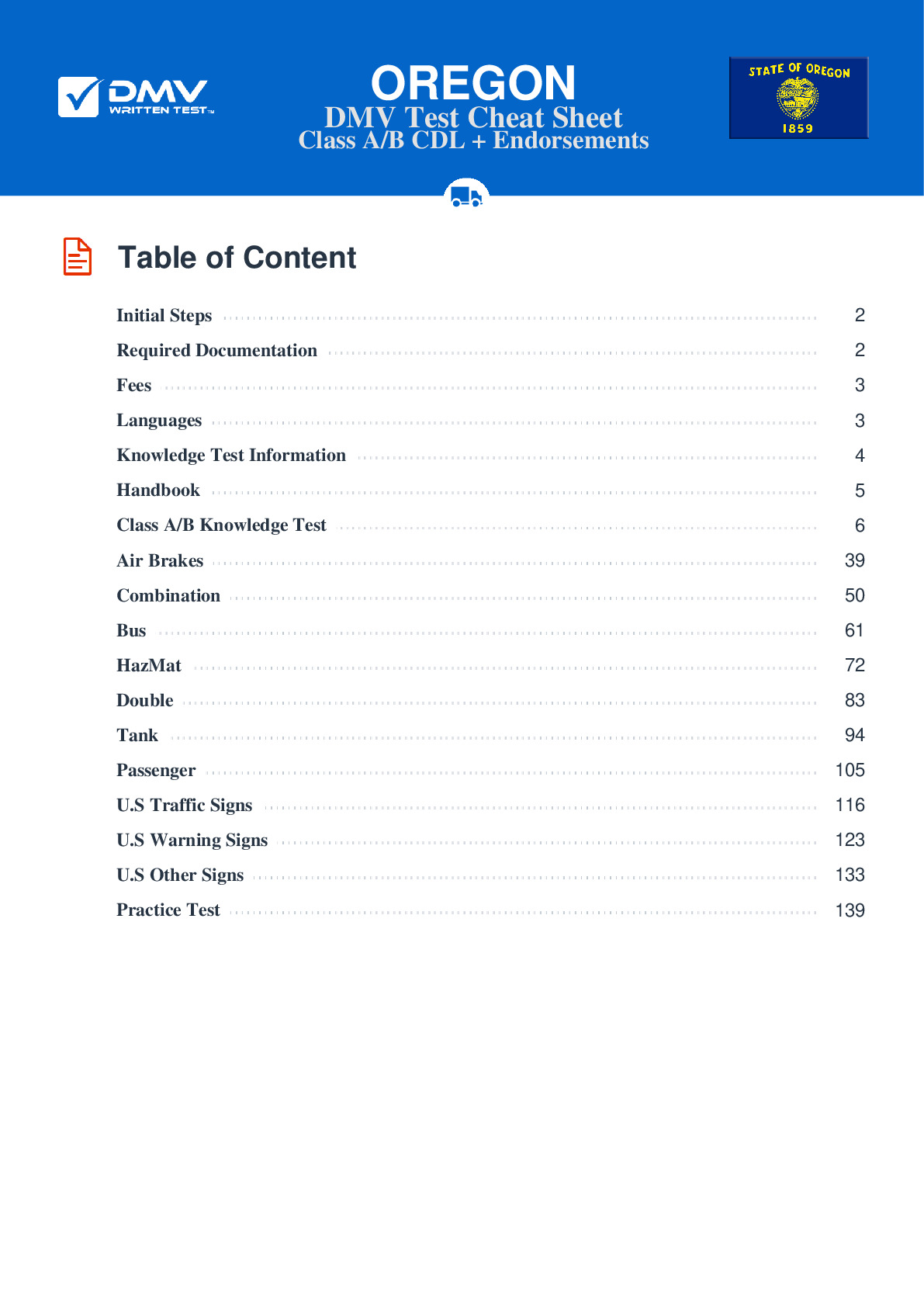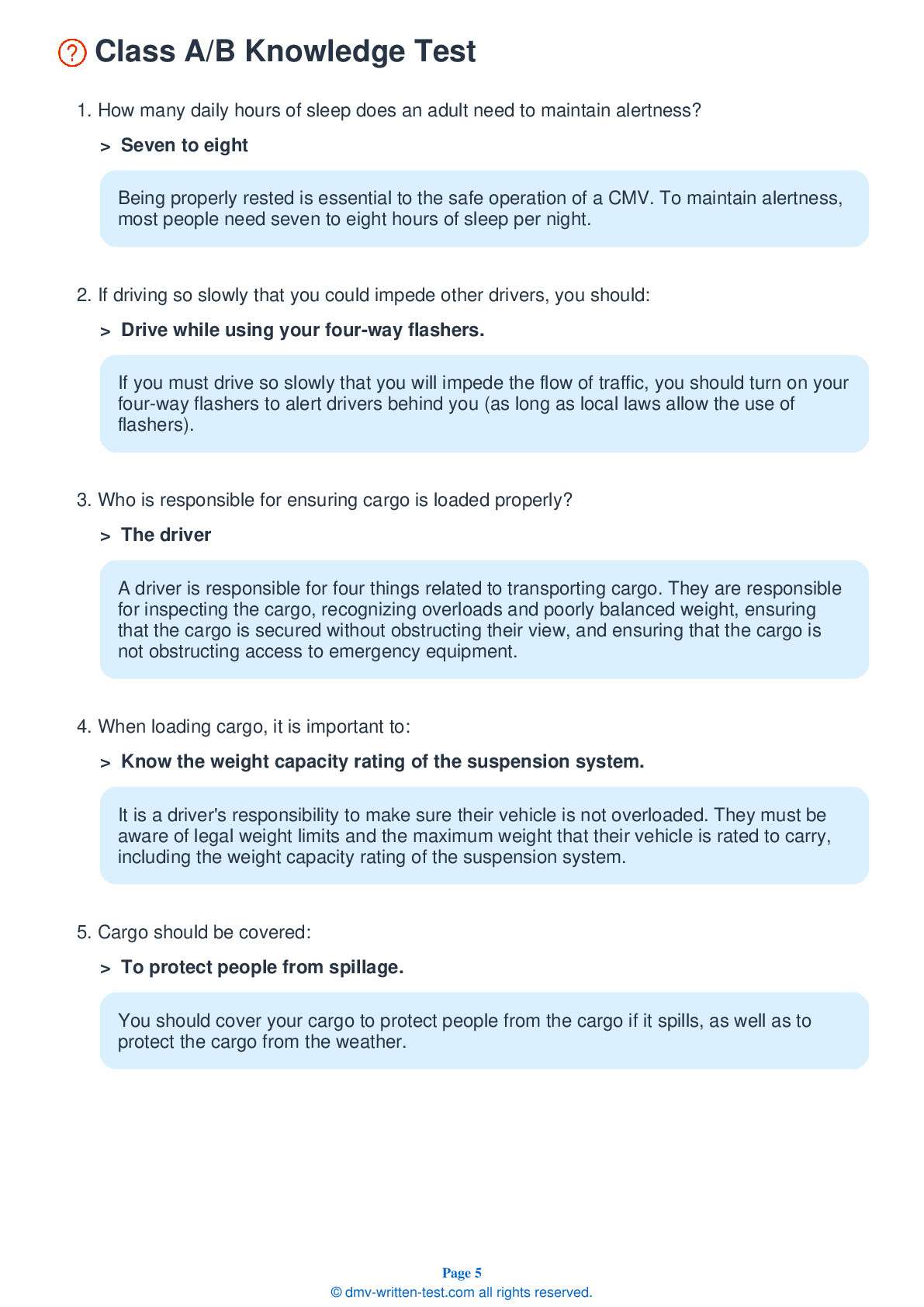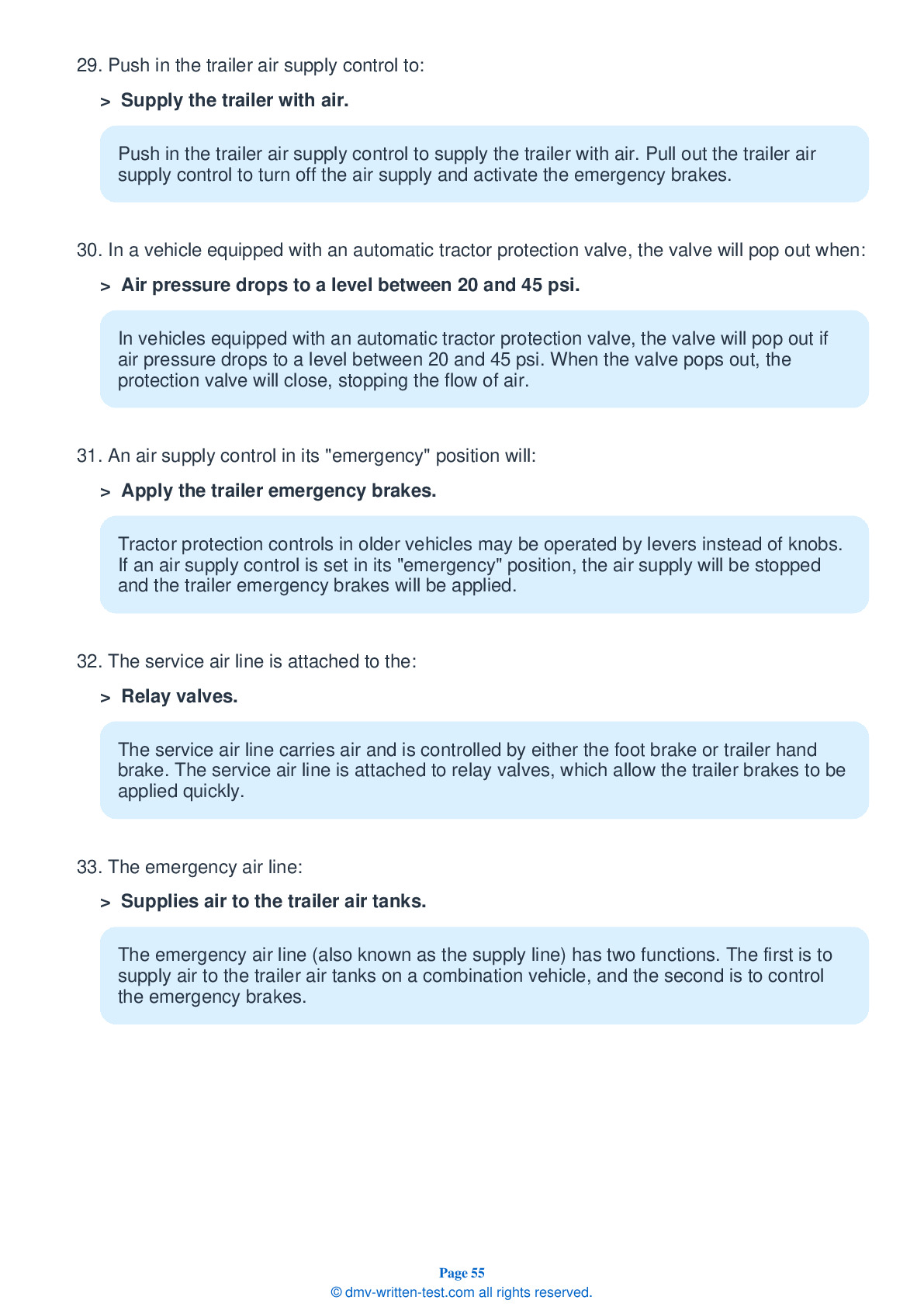Combination
All applicants who are applying for a Class A CDL should be prepared to take the Combination test. This test covers information found in Section 6 of the Oregon Commercial Driver Manual. Section 6 provides the information needed to safely operate tractor-trailers, doubles, triples, and straight trucks with trailers. The test is made up of 20 multiple-choice questions, and applicants will need to correctly answer a minimum of 16 questions to pass. The Combination test is not a replacement for the Double/Triple endorsement test.
Number of Question
Passing Score
15. When braking while pulling a trailer equipped with anti-lock brakes, you should:
Explanation
When driving a tractor-trailer combination that is equipped with an Anti-Lock Braking System (ABS), you should brake in the same manner that you would if the vehicle was not equipped with ABS.
16. Rearward amplification refers to:
Explanation
Vehicles with trailers are vulnerable to rollover due to the "crack-the-whip" effect, which is caused by rearward amplification.
17. In a double or triple combination, the ____ trailer should be directly behind the cab.
Explanation
When positioning trailers in a combination, the most heavily-loaded trailer should be the closest to the tractor. The lightest trailer should be positioned in the rear.
18. Bobtail tractors are ____ to stop than tractors attached to full semitrailers.
Explanation
Bobtail tractors are tractors that are not attached to any semitrailers. When operating a bobtail, you should be aware that stopping can be difficult and that it will take a longer distance to come to a complete stop than a tractor attached to a loaded semitrailer.
19. Before a drive, ensure that air flows to all trailers by:
Explanation
Before a trip, ensure that air in the air brake system reaches all trailers. Do this by waiting for air pressure to build, then sending air to both the emergency and service lines and opening the shut-off valves on the rear of the last trailer. If air escapes from the shut-off valves in the rear of the combination, the air is being supplied to the entire vehicle.
20. A trolley valve:
Explanation




